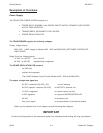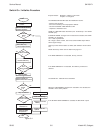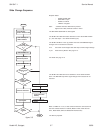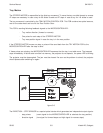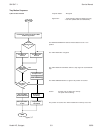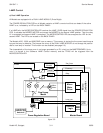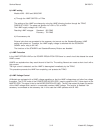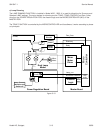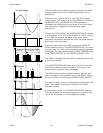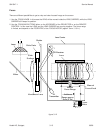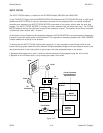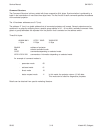b) LAMP setting
Models 4020 - 9020 and 9020/CINE:
a) Through the LAMP SWITCH or P-Bus
The settings of the LAMP are change by using the LAMP dimming function through the TRIAC
DISSOLVE LOGIC. The phase cut position for LOW is 75% of HIGH .
The LAMP supply voltage is 91 VAC only.
Resulting LAMP voltages: Standard: 82V RMS
Economy : 72V RMS
b) Via accessory slot
External units that are connected to the accessory slot cannot use the Standard/Economy LAMP
setting with phase cut. Therefore, the LAMP supply voltage is switched with the ECONOMY
SIGNAL and a relay to 82 VAC.
The functions of the STANDBY and Standard/Economy Buttons are disabled.
c) LAMP Protection
In the LAMP RETURN LINE on the POWER REGULATION PCB there is a small circuit that detects the actual
LAMP current.
LAMPS can explode when they reach the end of their life. The melting filament can create a short circuit with a
high current.
The high current is detected, and the LAMP is deenergized immediately by the TRIAC.
This procedure prevents the LAMP from exploding, and protects the TRIAC.
d) LAMP Voltage Control
All Models are equipped with a LAMP voltage regulation so that the LAMP voltage does not follow line voltage
fluctuation. The 5V AC outlet of the POWER REGULATION PCB i used to create the VAC_Value signal on the
MASTER PCB. This signal is fed to the MICROCONTROLLER (MC). The MC then selects a phase cut position
of the LAMP voltage which results in a reasonable constant LAMP voltage. This function is disabled if an
accessory is connected to the accessory slot. In this case the LAMP operates with 82 VAC.
Service Manual SM 2547-1
03/98 3-12 Kodak AG, Stuttgart



